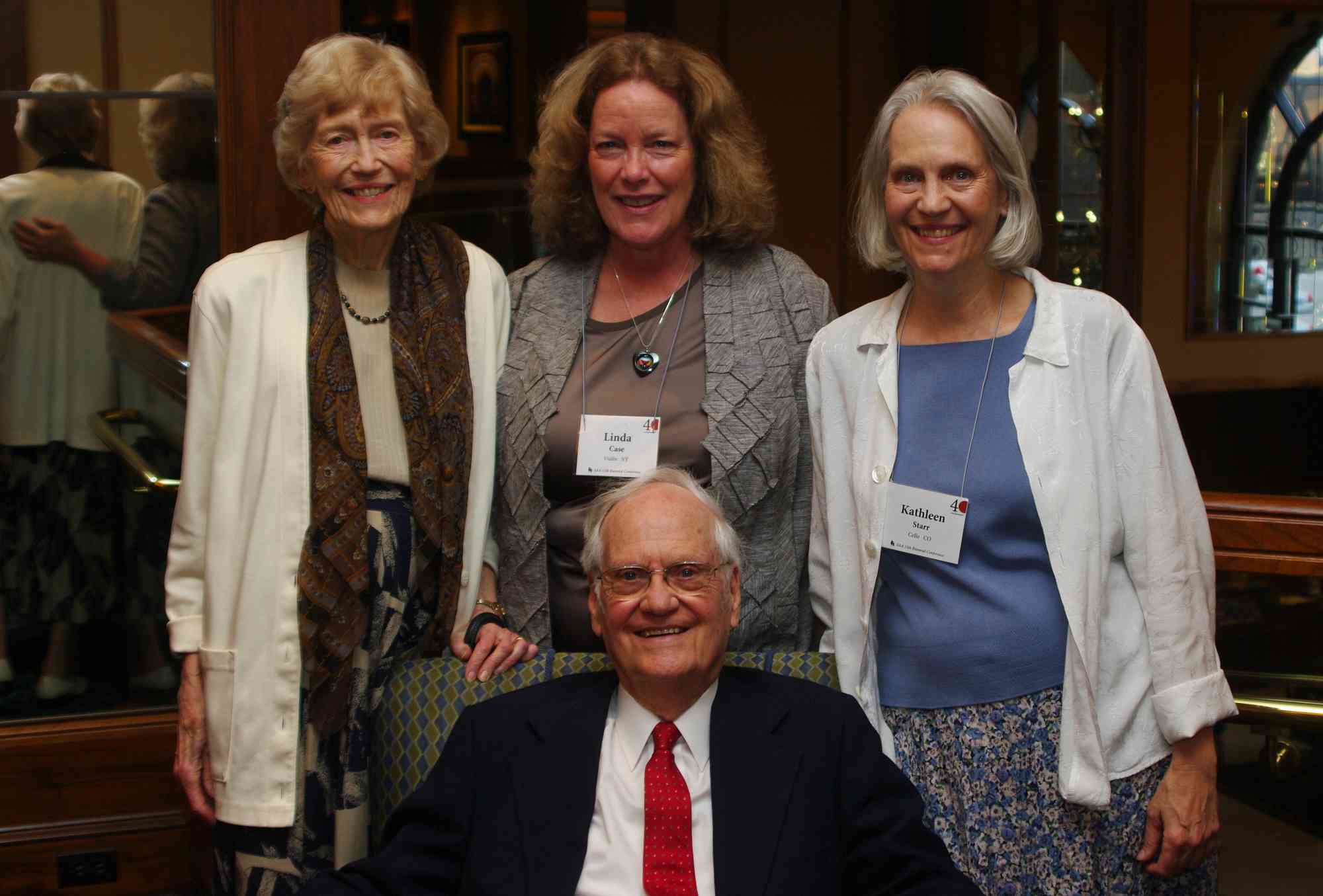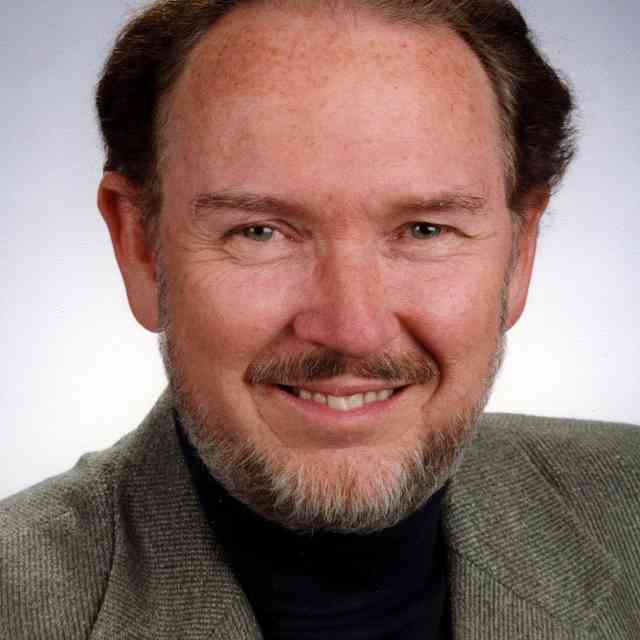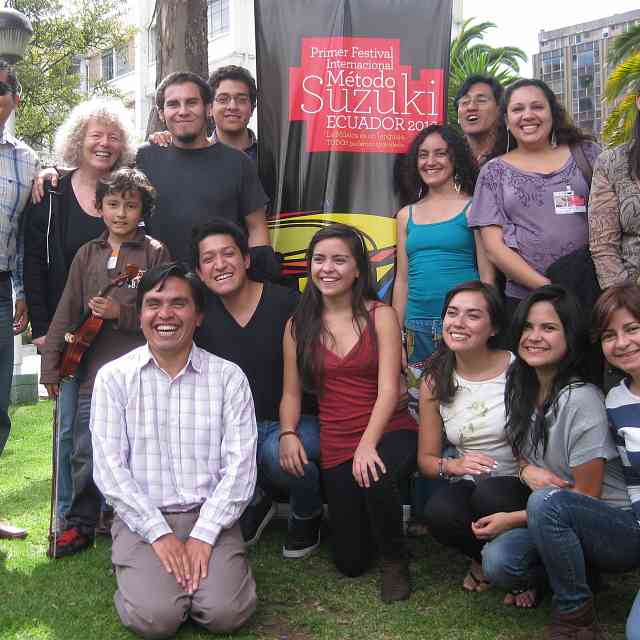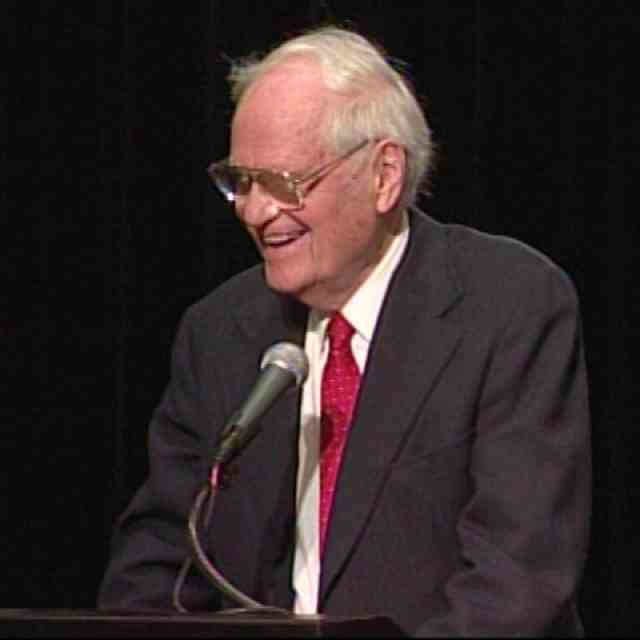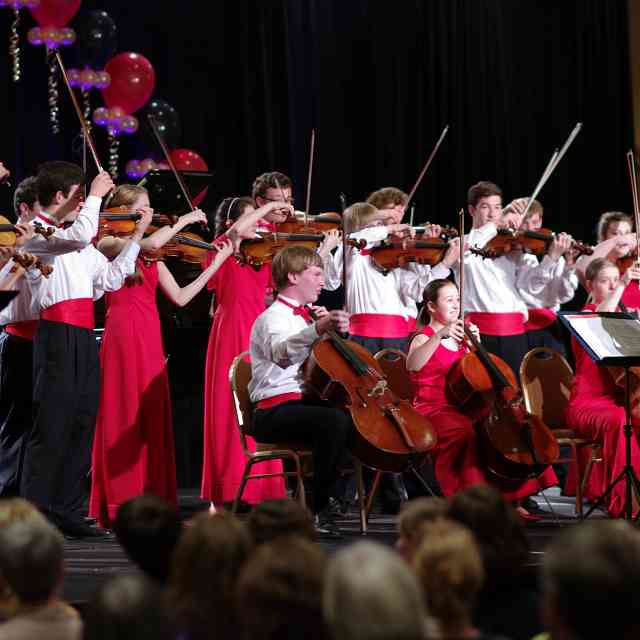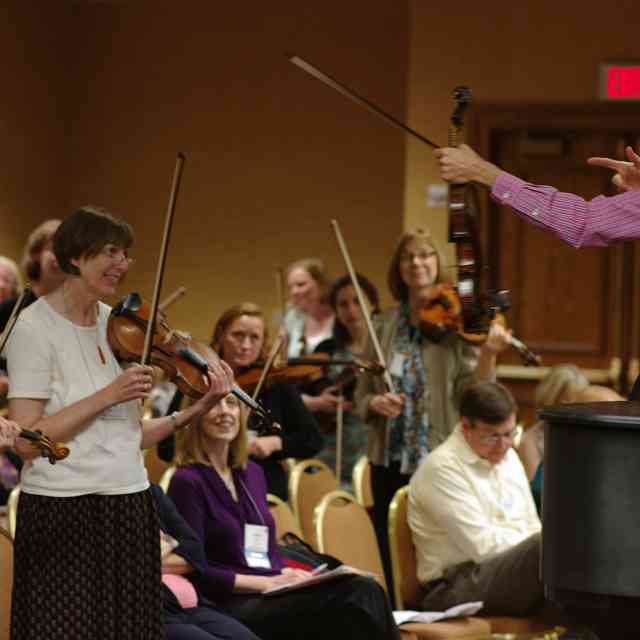Keynote from the 2012 SAA Conference
Thank you. Thank you. I would like to thank the conference committee for giving me this opportunity to speak to you on this 40th anniversary of our founding of this thriving organization…the Suzuki Association of the Americas.
But first, I would like to recognize two important family members who are here with me today…my dear wife, Connie, and our first daughter, Kathleen…. In a mere 25 days, Connie and I will be celebrating our 65th wedding anniversary!
Yes, that is unusual…for two reasons. First, that we are both alive and well, and second, we are together.
Remember that 85-year-old lady that appeared before a judge asking for a divorce? “You’ve lived together for all of those years and now you want a divorce. Why?” exclaimed the judge incredulously. “Because, your honor,” replied the woman, “Enough is enough!”
President Carter said their marriage survived their writing a book together. Well, ours not only survived our writing together the book To Learn With Love, but also survived far more serious perils: raising 8 children, taking all of them to Japan , playing sonata recitals together, giving speeches together, and performing on programs with the children.
Fortunately for me, Connie never said “Enough is enough!” Actually, when I asked her if she’d like to go to Japan for a year with the whole family, her immediate answer was, “Yes, when do we leave?” and then she started planning to pack for the trip. We would never have made it to Japan if it weren’t for Connie and her assistant, Kathleen. We traveled like the British exploring Africa, with two huge crates and 20 suitcases, taking along a typewriter and over 100 books….
I said Kathleen was our first daughter. That means a lot, the word ‘first’ in a family as large as ours with 5 boys younger than she! it meant Kathleen’s being, fortunately for us, the very capable, loving, strong, and wise, substitute mother when her parents were out of town! Thank you, Kathleen….
It was on a warm spring morning in Chicago over 40 years ago that John Kendall and I met in an airport motel previous to a luncheon meeting with two men, formerly American String Teachers Association officers, who had previously incorporated Talent Ed. USA, which was to be the American Suzuki version of Talent ED. Japan. Clifford Cook and Don Shetler from the Eastman School of Music were also to attend this meeting.
John and I didn’t know whether Suzuki himself had blessed this organization with the use of the Tal. Ed. name but Suzuki had indicated to both of us that he would like us to start a Suzuki movement in America. We had been appointed, along with Cook and Shetler, as board members of Tal. Ed. USA, and this meeting in Chicago was to deal with its structure.
At our morning meeting, John and I decided to ask many questions about the Suzuki background of these two gentlemen, and their vision of Tal. Ed. USA. If the answers were unacceptable, we were going to resign from that organization and propose they join us in a new one.
Our luncheon meeting started with the election of officers. Since I had spent the longest time in Japan I was elected president, John president-elect. After a long discussion, we expressed strong reservations about the direction of Tal. Ed. USA. We were surprised to hear them talk about carefully limiting membership in Tal. Ed. USA.
Then I announced “I resign from Tal. Ed. USA.” Clifford Cook and John then resigned. I continued. “I would like to start a new organization called ‘The Suzuki Association of the Americas,’ (I knew from taking a group of children twice to Venezuela that our Southern neighbors would want to be a part of us) and invited the two gentlemen to come to Stevens Point where we would announce the formation of this new organization. They declined and left us there.
I really believe that David Sengstack, president of Summy-Birchard, then the American publisher of Suzuki materials, did have Suzuki’s interests at heart in not wanting the movement to split into many parts as potential teachers rushed to Japan, found favor with Suzuki, then returned to present his latest ideas.
Sengstack felt the American Suzuki movement needed control, which he was willing to provide. Mrs. Suzuki had already refused his offer to trademark and protect Suzuki’s name. She didn’t want Suzuki to be controlled by a business. He put a lot of pressure on us… how could we finance ourselves, where would we get the money, how could we protect the method, how could we possibly survive, etc? Sengstack then offered to help found this new SAA, and provided a trademark lawyer for our first meeting in Stevens Point. The lawyer astounded John Kendall and me by providing me with the agenda for the meeting. I walked into Michelson Auditorium to greet a restless disturbed group of Suzuki teachers, whom I thanked for attending. But then Sandy Reuning voiced their feelings!
“Who chose you to be up there on the stage? Aren’t we all in this together?”
I had to ask Sandy to hold his fire until I did some explaining. Most of the teachers there were not aware of the existence of Tal. Ed. USA. I told of that previous meeting with its incorporators, that we had been named to its board, that we resigned and said we were forming a new organization, AND we wanted ALL of the teachers here…about a dozen pioneers…to join us as the founding board of directors.
“Before we go into a closed board meeting to discuss our future”, I said, “Let’s give David Sengstack and his staff our thanks for his help. We hope he will continue assisting us.” Everyone applauded and he and his staff reluctantly got up and left.
He did continue to help us, lending us Harriet Mogge as secretary. Only he didn’t stop his campaign to get control of Suzuki’s name. Later, taking me to the airport in LA after the Japanese children’s performances at the MENC in Anaheim, he made his final pitch. He offered to create a new Suzuki organization, double my salary, move me to Evanston, then home of Summy-Birchard, buy a house for training teachers etc…. there was a catch, only one…Since I was very close to Suzuki, I was to persuade Suzuki that it would be best for the growth of a PURE Suzuki movement in America to grant him, David Sengstack, control of Suzuki’s name which he would protect from misuse by unauthorized individuals. Before flatly refusing this absurd proposal, I had to find out how he intended to enforce his control. I asked, “What if a teacher started to teach Suzuki without being licensed, say a teacher in Wahoo, Nebraska?” “I’d send the sheriff to lock them up. I’d have to do that only once. The word would get around.”
Mrs. Suzuki told me later that he made a proposition directly to Suzuki, which she helped him to reject. Suzuki, however, was clearly unhappy with our democratic change of officers every two years. After all, he was the president of Talent Ed. Japan since its beginning. He said he wouldn’t even know the succeeding officers, but he finally, but VERY reluctantly, agreed.
And so it came to pass that SAA continued to grow, but a dangerous move for business control almost succeeded some years later. David Smith, a multi-millionaire Atlanta businessman was written up in the Wall Street Journal saying that he would like to spend his acquired millions on some worthy cause and he had chosen Suzuki as his beneficiary. Having become in some way acquainted with Suzuki’s work, he decided to give Suzuki a building in Matsumoto to expand his teachers’ studios, and to sponsor a tour in the US of 100 Japanese children with 100 American children. Carnegie Hall, the Kennedy Center, the Atlanta Music Hall, then Disneyland!
Sandy Reuning and I were among the American teachers as coaches and chaperones. During the Atlanta visit, Suzuki was taken on a tour of the offices of Smith’s enterprises. On this tour, Mrs. Suzuki was lured away from Suzuki’s side for maybe five minutes, during which time Suzuki was presented with a legal document to sign, granting total rights to his name to David Smith who would then grant licenses to those wanting to use the name.
Suzuki signed it! After all, he had never met a millionaire who already had spent hundreds of thousands of dollars promoting his method! To Suzuki’s mind, Smith had already proved his integrity. But, as FATE would have it, Suzuki signed in the wrong place, signing over Smith’s printed name! Before another document could be drawn up, Mrs. Suzuki came upon the conspirators, seized the letter and managed to persuade her husband not to sign again until he talked with Starr and Reuning. We were of course horrified by the sudden turn of events. We took turns CLINGING to Suzuki, talking constantly, persuading, persuading, persuading. It was touch and go. Suzuki had been convinced that THIS was the opportunity for him to get his method recognized all over America and backed with money!
I remember sitting with Sandy and Suzuki in the limo that was taking us to a house that was to be the first Suzuki kindergarten outside of Japan, both of us trying to convince him that this was the wrong way to go….
We are all here today, and not licensed to Smith’s company, so we know how things turned out, but there was a stange ending to this saga. Smith was found shot to death in an alley in NYC some years later. To my knowledge, no one was apprehended. There was no explanation of his death….
The SAA continued to flourish, although it was rocky at times, with changes of executive leadership. And so, on this joyful occasion as we look toward the future, let us reflect on what we have gained. There is something very powerful that binds all of us together today. It is that we are all beneficiaries of Suzuki’s inspiration and guidance. We have been inspired by Suzuki to inspire others. We teachers have been given the opportunity to assist parents in developing the extraordinary abilities and the noble characters of their children. Parents have been given the opportunity for their children to experience the world’s finest musical education….a musical education of the whole child…body, mind, and spirit. We have all become members of a world-wide family, a Suzuki family dedicated to the improvement of mankind through the unique care of its children. We have been blessed with many new friends in this great work. We have been thrilled by many fine performances of great music given by our children….
Imagine at this very moment, your life without these blessings. Imagine that Suzuki had never lived, or that he’d never had his great dream, or that he’d never shared it. But he did live, he did have this great dream, and he did pour his life’s energy into sharing his dream with each of us. We have been given a legacy….his dream. He has entrusted us to carry on his passionate love of children and his unshakeable belief in their extraordinary abilities.
As beneficiaries we must honor this legacy. We must honor the very essence of Suzuki’s philosophy, even in the face of criticism from without and differences from within, but we must be careful not to stifle creativity in our teachers with excessive regulation and insistence on conformity….
It is well at this moment to look at Suzuki’s wonderful magnetic effect on small children. It explains his great success with them. This is the spiritual basis of his movement.
I was sitting with Suzuki one sunny day in the Friendship Park near the Suzuki Kaikan. As we talked, I noticed a small girl approaching us. She could have walked by us, but as she neared Suzuki, she turned and walked straight up to him. They talked briefly, then she skipped away, smiling, down the street.
“Is that one of the students at the Kaikan?” I asked.
“I never saw her before,” Suzuki replied.
“But she came right up to you, a total stranger, and started talking to you” I said.
“Oh, but I had already greeted her wonderful living soul as she approached me. She caught my greeting and came over to say hello.”
“So”, I said, “you believe that in the same way you could change the attitude of all children?”
“Yes, I have great respect for all children. Living soul to living soul. The children feel my feeling, then change. Many people do not have respect for the living soul in each child.”
“You believe that the teacher’s respect for the child’s living soul is caught by the child. If I went out in the street and brought in some children you feel that you could teach them?”
“Yes, I can now, any children. I have great respect for them, and believe in their ability. I know now in my heart how wonderful is the potential ability of every child!”
“This then is your main goal in teaching, to teach teachers and mothers to feel that way.”
“Yes. This is so important. I tell mothers that about 25 years ago I had an illness. When I was sick then. I thought a great deal about life. I then understood my purpose in life. Nature gave me a wonderful living soul. My living soul worked and my body grew. I then understood that I must work and do what my living soul wanted me to do. When I was born, I didn’t ask to be born, and when I die, it is not I who determines when. I am not anxious about dying. This thinking changed my body. I have had no illness these last 25 years. I must live and do what my living soul wants, I must work. I work for all the children of the world. We must change the world. I will try to do this as long as I live.
“I must tell every mother that she must have respect for her own children. The mother says, ‘This is my baby’, but I say, ’No, this is a wonderful living soul given to you. You must have respect, living soul to living soul. Children must be educated to be good human beings. Every child can be educated. This is the mother’s duty. The child’s living soul feels everything, even if the child does not understand in his mind.”
“Ah”, I added. “So you have another goal in your work, in addition to the happiness of all children. It is character formation of parents and teachers.”
I must interrupt myself here to tell you a story I just heard this morning of a fine example of the character of a Suzuki teacher whose concern for a student went far beyond mere care. The student’s mother had asked the teacher, Betsy Fee of Greenville, South Carolina, if she would take her child as a student since she previously had an aneurism that might affect her learning. Naturally, Betsy agreed, since the little girl wanted to play the violin. Betsy had had some problems with seizures in her own childhood. The doctors couldn’t trace Betsy’s problem, since there was no history of seizures in either of her parent’s families.
At the girl’s last lesson, Betsy noticed a certain nervous quality in her tone and in her finger action that she had never seen or heard before. It slowly dawned on her that she had experienced that same tone and fingering problem herself before one of her own seizures. She couldn’t shake her concern, but said nothing as the lesson ended.
At an orchestra rehearsal that evening she kept being haunted by an uneasy feeling that something was wrong. Although she was late getting home from the rehearsal, she called the parents who were already in bed, and expressed her concern to them. The mother said, “Thank you for calling, Betsy. The doctor said we should watch her carefully. We must take her to the hospital right away.” The bright ending to this teacher’s story is that the doctor said the little girl would have died that night if she hadn’t gone to the hospital for treatment.
“Just think,” said Betsy, “I must have had those seizures in order to prepare me to recognize what was happening to that little girl, and ultimately to save her life.”
Betsy Fee, would you please stand up and be recognized?
Suzuki himself didn’t always succeed with the noble sentiment of character formation in teachers. Most of his trainees came right out of high school, but Naomi Oshimi, one of his trainees came after graduating from college with a degree in literature. A beautiful girl. Connie thought she could have been a top model in Japan…Naomi was also very outspoken. At one time she told me that she had a long serious talk with Suzuki about the young trainees, telling him that they wished he would treat them as he did little children, that they often cried after lessons when they had disappointed him. “What did he say to that?” I asked. “Not a thing,” was her reply. “He just nodded and stared off into space”.
Naomi loved to come to our house and hold our baby, David. When she didn’t show up for a few days, we found that even though she had not graduated, she had been asked by Suzuki to go to Tokyo to take over the class of a teacher who had died suddenly. It seemed a logical choice, but it deprived me of having a follow-up on the effects of her talk.
As Suzuki got older, and no longer teaching little children, he found teaching kenkyusai (teacher-trainees) more and more difficult. Once, on a visit to see Suzuki, I arrived to find him holding a class on tone. He welcomed me with this greeting.”Now I’m going to ask Starr-sensei to judge your tone. If he thinks it is beautiful, you get three chocolates, if bad, no chocolates.”
The next student happened to be an American young man who looked frightfully nervous. He didn’t play well. When he finished, I paused, not knowing exactly what to say, when Suzuki broke in impatiently, “No chocolates!!” Fortunately, for me, the unfortunate young man was followed by several wonderful violinists with three-chocolate-tones.
This session was in sharp contrast to a younger, but not really young, Suzuki on stage walking by a large group of students listening to a single tone from each one, without comment. “I want them to compare their own tone with the others. I do not want them to know what I think.” he said.
Suzuki wanted us to help all of our students to be good human beings, with fine character. He was very proud of a former student who became mayor of Akaya and was reelected three times. “The people of Akaya loved him,” Suzuki said.
Helen Higa and her associate Alexi Luscher, used ‘character’ in a recent choice of students to be featured on a solo recital. Of course they had to play well, but they were not necessarily the most advanced for their age. Some factors contributing to their being chosen were: Good behavior in group lessons, helping the orchestra director set up, and volunteering to play on benefit concerts. The applause was strong, parents acknowledging the character element….
Suzuki once told me that lying awake at night, thinking of all the children in the world whose abilities are never recognized or developed, he couldn’t help weeping for them.
My son Greg and I sometimes would ride our bicycles over to visit him in the evening. He was always working, listening to those thousands of tapes, and making a personal comment of encouragement on each, but he stopped working, seeming to enjoy our visits, asking Mrs. Suzuki to give us tea. One night, after he had just returned from Tokyo, he told of visiting the Minister of Education, asking for him to consider a reform of Japanese public education. He had done this many times over the years, the minister would always listen politely, nodding agreeably, but nothing was ever changed.
I asked Mr. Yamamura, already a teacher of some repute before being attracted to Suzuki, what was the biggest change in his teaching as a Suzuki teacher. “My belief in the children’s abilities!” he replied enthusiastically. “When I retired from orchestral playing, I needed to maintain a large class of students, so I kept a number that I felt were hopeless. But Suzuki convinced me that all children have high ability and it was up to me to find out how to develop their high abilities. This made my teaching much better! I was often surprised by the results!”
Mr. Tanaka, the primary class teacher at the Hongo school, voiced the same reaction. “In the beginning I had a hard time standing in front of my class, bowing, and saying to myself as Suzuki instructed me, ‘All of these children have high abilities’. I felt much better when I added, ‘despite all evidence to the contrary.’”
Tanaka added, “I began to believe in their high abilities and this belief changed my teaching radically. I was much more creative than I had ever imagined of myself. The results of this change of belief astonished me! ALL of the students excelled beyond my expectations!”
Once I asked a music appreciation class of 400, “How many of you as children studied music at some time?” Most of the hands went up. “How many of you play now?” Only a few hands remained up.”How many of you WISH you could play NOW?” ALL of the remaining hands were thrust into the air. “Then why did you quit?” “Because we hated to practice!!” they yelled.
Then I told them the story of a Japanese college student, who used to play violin. His roommate, a cellist, invited him to go to the college orchestra rehearsal. “We’re playing Brahms 1st. It’s so exciting, I almost fall out of my chair playing it!” And so our ex-violinist went with the roommate. He too was overcome by the beautiful music.
Going home for a break, he asked his mom, “Didn’t I used to play violin?” “Didn’t you used to play violin?” his mother retorted. “Don’t you remember all the fights we had about practice? When you were 13, I gave up. No practice, no lessons.” You won’t believe the young man’s reply. “Mom, you should have known better than to pay attention to a 13-year-old!” So, these stories should make us pay better attention to Suzuki’s request that we all work together to help students enjoy their learning.
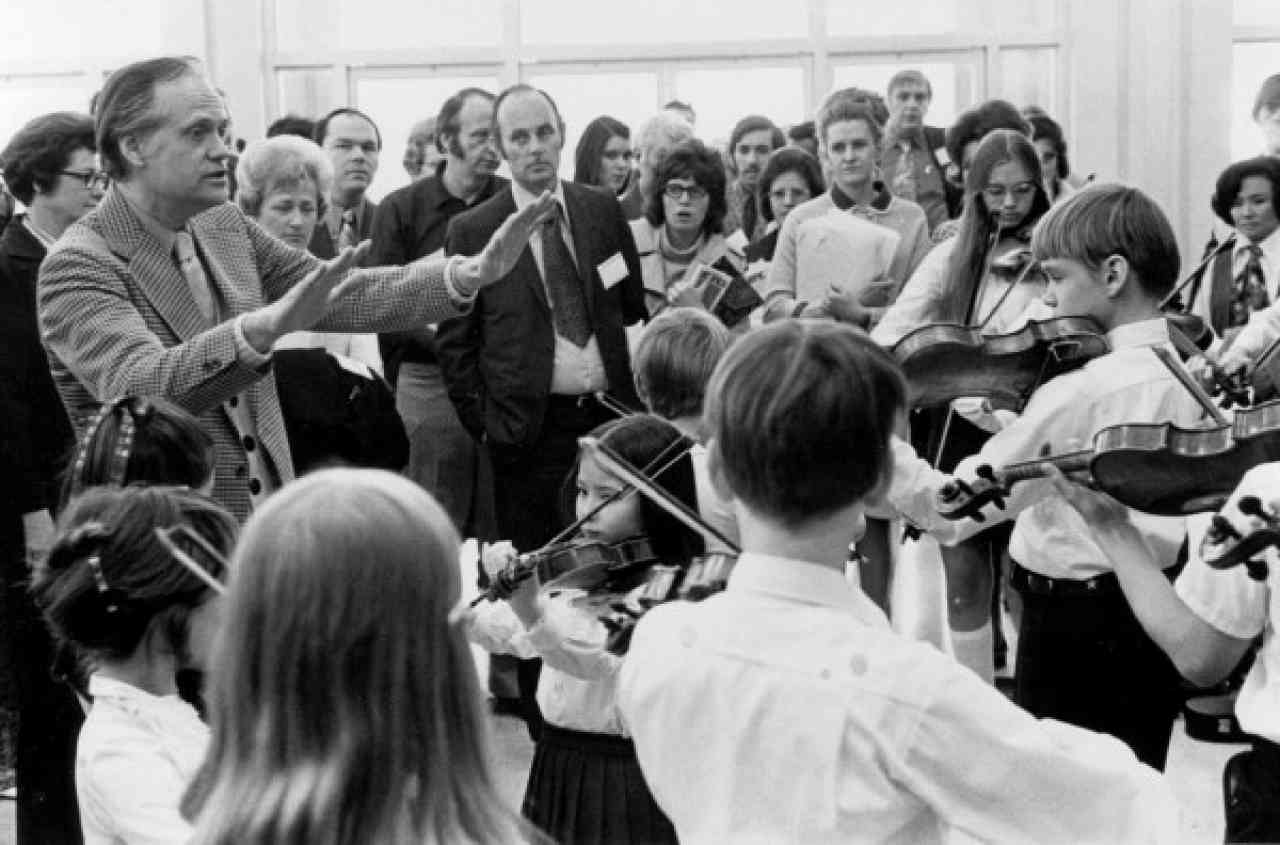
William Starr conducting a student orchestra
Looking far into the future, I can see this Suzuki movement creating another Renaissance similar to that of the educated class of Elizabethan England where so many could read music and perform motets and madrigals in their homes. And in Vienna, in the audience hearing the first performances of Beethoven symphonies, it is estimated that 90% had studied piano….
Can you not see, in your vision of the future , among the hundreds of thousands of Suzuki students, many highly skilled musicians enriching both professional and community orchestras, playing chamber music in their homes, providing live music for churches, and entertainment for social clubs and residents of nursing homes, thereby benefiting the whole of our society?
We should celebrate Suzuki-sensei’s magnificent life by following his example in inspiring children, in believing in their exceptional abilities, in teaching with skill and compassion, and , most importantly, in endeavoring to be exemplary models of noble human beings.
Here we are, 40 years later, rejoicing in having received from Suzuki this precious bequest to carry on his dream. Let us resolve to walk together into the future in unity of mind and spirit. With this resolution we praise Suzuki’s work. We thank him for enriching our lives, we honor his name, and we fill his spirit with happiness. Yes, Suzuki’s spirit, which is with us here today. We fill his spirit with happiness as he rejoices in our commitment to the continuation of his life’s work…. For the happiness of all children…. Thank you.
